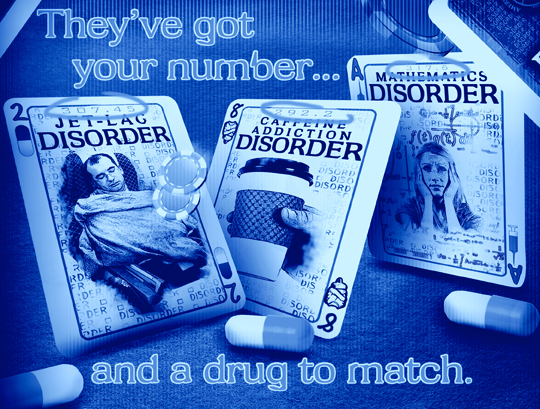
“We’re like Cinderella’s older stepsisters,” a psychiatrist told me the other day. “We’re trying to stick our fat feet into the delicate slipper so the prince can take us to the ball. But we ain’t going to the ball right now.” Which is why we might feel a little sorry for the beleaguered A.P.A
The New York Time – Jan 30, 2011
By GARY GREENBERG
YOU’VE got to feel sorry for the American Psychiatric Association, at least for a moment. Its members proposed a change to the definition of autism in the fifth edition of their Diagnostic and Statistical Manual of Mental Disorders, one that would eliminate the separate category of Asperger syndrome in 2013. And the next thing they knew, a prominent psychiatrist was quoted in a front-page article in this paper saying the result would be fewer diagnoses, which would mean fewer troubled children eligible for services like special education and disability payments.
Then, just a few days later, another front-pager featured a pair of equally prominent experts explaining their smackdown of the A.P.A.’s proposal to eliminate the “bereavement exclusion” — the two months granted the grieving before their mourning can be classified as “major” depression. This time, the problem was that the move would raise the numbers of people with the diagnosis, increasing health care costs and the use of already pervasive mind-altering drugs, as well as pathologizing a normal life experience.
Fewer patients, more patients: the A.P.A. just can’t win. Someone is always mad at it for its diagnostic manual.
It’s not the current A.P.A.’s fault. The fault lies with its predecessors. The D.S.M. is the offspring of odd bedfellows: the medical industry, with its focus on germs and other biochemical causes of disease, and psychoanalysis, the now-largely-discredited discipline that attributes our psychological suffering to our individual and collective history.
This tension has been high since at least 1917. That’s when Thomas Salmon, a future head of the A.P.A. — which was founded in 1844 — noted that psychiatry’s “classification of mental diseases is chaotic.” He worried that “this condition of affairs discredits the science of psychiatry and reflects unfavorably upon our association” and urged his membership to forge a diagnostic system “that would meet the scientific demands of the present day.”
The American Psychiatric Association has been trying to do just that ever since, mostly by leaving behind ideas about the meaning of our suffering in favor of observation and treatment of its symptoms. In 1980, it hit on the strategy of adopting a medical rhetoric, organizing those symptoms into neat disease categories and checklists of precisely described criteria and publishing them in the hefty — and, according to its chief author, “very scientific-looking” — D.S.M.-III.
That book, with its more than 200 objectively described diagnoses, would have made Dr. Salmon proud. By meeting the scientific demands of the day, it was credited by many with having rescued psychiatry from the brink of extinction, and its subsequent revisions have been the cornerstone of the profession’s survival as a medical specialty.
But as all those Diagnostic and Statistical Manuals have stated clearly in their introductions, while the book seems to name the mental illnesses found in nature, it actually makes “no assumption that each category of mental disorder is a completely discrete entity with absolute boundaries dividing it from other mental disorders or no mental disorder.” And as any psychiatrist involved in the making of the D.S.M. will freely tell you, the disorders listed in the book are not “real diseases,” at least not like measles or hepatitis. Instead, they are useful constructs that capture the ways that people commonly suffer. The manual, they go on, was primarily written to give physicians, schooled in the language of disease, a way to recognize similarities and differences among their patients and to talk to one another about them. And it has been fairly successful at that.
Still, “people take it literally,” one psychiatrist who worked on the manual told me. “That is its strength in a political sense.” And even if the A.P.A. benefits mightily from that misperception, the troubles on the front page are not the organization’s fault. They are what happens when we expect the D.S.M. to be what it is not. “The D.S.M. has been taken too seriously,” another expert told me. “It’s the victim of its success.”
Psychiatrists would like the book to deserve a more serious take, and thus to be less subject to these embarrassing diagnostic squabbles. But this is going to require them to have what the rest of medicine already possesses: the biochemical markers that allow doctors to sort the staph from the strep, the malignant from the benign. And they don’t have these yet. They aren’t even close. The human brain, after all, may be the most complex object in the universe. And the few markers, the genes and the neural networks, that have been implicated in mental disorders do not map well onto the D.S.M.’s categories.
“We’re like Cinderella’s older stepsisters,” a psychiatrist told me the other day. “We’re trying to stick our fat feet into the delicate slipper so the prince can take us to the ball. But we ain’t going to the ball right now.” Which is why we might feel a little sorry for the beleaguered A.P.A.
On the other hand, given that the current edition of the D.S.M. has earned the association — which holds and tightly guards its naming rights to our pain — more than $100 million, we might want to temper our sympathy. It may not be dancing at the ball, but once every mental health worker, psychology student and forensic lawyer in the country buys the new book, it will be laughing all the way to the bank.
Gary Greenberg, a psychotherapist and the author of “Manufacturing Depression,” is writing a book about the making of the fifth edition of the Diagnostic and Statistical Manual of Mental Disorders.
Read article here: http://www.nytimes.com/2012/01/30/opinion/the-dsms-troubled-revision.html

